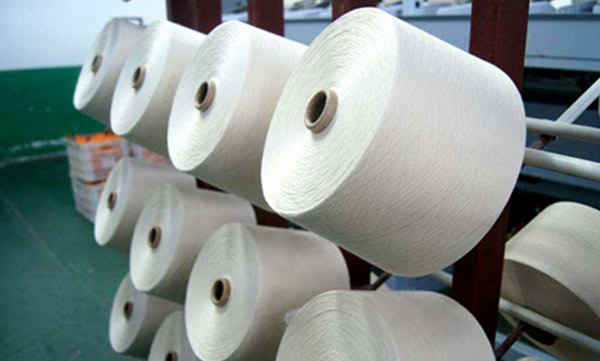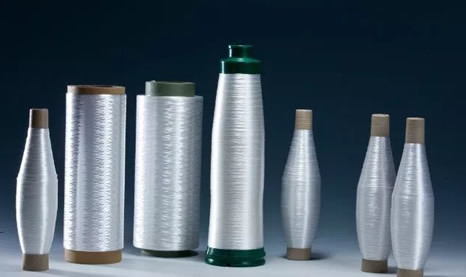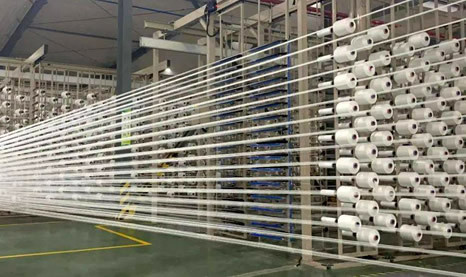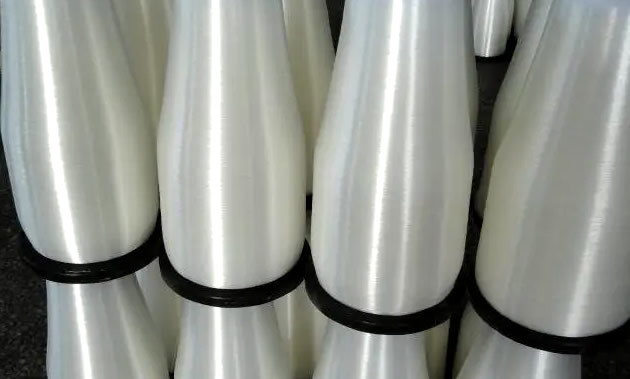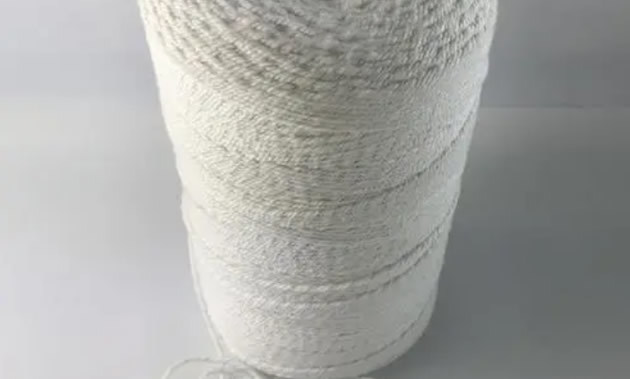Related news
Discussion on High Performance Fibers and Composite Materials
Release time:
2023/05/14
High performance fiber refers to the chemical fiber with special physical and chemical structure, performance and use, or with special functions. It generally has extremely high tensile strength, Young's modulus, and also has other characteristics such as high temperature resistance, radiation resistance, flame resistance, high pressure resistance, acid resistance, alkali resistance, oxidant corrosion resistance, etc. It is widely used in aerospace, national defense and military industry, transportation, industrial engineering, geotechnical engineering Even in fields such as biomedicine and electronics.
High performance fiber refers to the chemical fiber with special physical and chemical structure, performance and use, or with special functions. It generally has extremely high tensile strength, Young's modulus, and also has other characteristics such as high temperature resistance, radiation resistance, flame resistance, high pressure resistance, acid resistance, alkali resistance, oxidant corrosion resistance, etc. It is widely used in aerospace, national defense and military industry, transportation, industrial engineering, geotechnical engineering Even in fields such as biomedicine and electronics. High performance fiber composite materials are composite materials made by processing high-performance fibers as reinforcement materials and resin as matrix. They have excellent properties such as lightweight, high-strength, high modulus, fatigue resistance, corrosion resistance, strong designability, and easy processing and molding. The global high-performance fiber and composite materials are developing towards the direction of manufacturing technology evolution, low-cost, high-performance materials, multifunctional, and expanded applications. From the perspective of application technology and industry maturity, carbon fiber, aramid fiber, and ultra-high molecular weight polyethylene fiber are currently the most powerful high-performance fibers. With the improvement of downstream composite material molding technology, market promotion and demand are constantly increasing and showing an accelerating expansion trend.
At present, the global industry of high-performance fibers and composite materials is dominated by Japan, the United States, and the European Union. Among them, Japan has absolute advantage in the field of carbon fiber, and Toray, Teijin and Mitsubishi Liyang (now Mitsubishi Chemical) have contributed half of the global carbon fiber production capacity; The United States has a dominant enterprise in the aramid industry, DuPont, which monopolizes high-end product technology while also forming price control over low-end products; In Europe, DSM, a Dutch company with a dominant position in the field of ultra-high molecular weight polyethylene fibers, remains the world's leading supplier of ultra-high molecular weight polyethylene fibers, with production capacity surpassing other advantageous enterprises.
Carbon fiber and composite materials
Carbon fiber is an inorganic polymer fiber with a carbon content of more than 95%. It has excellent basic physical and chemical properties such as low density, high strength, high temperature resistance, high chemical stability, fatigue resistance, abrasion resistance, and high vibration attenuation, good electrical and thermal conductivity, electromagnetic shielding performance, and low coefficient of thermal expansion. Advanced carbon fiber composites reinforced with high modulus carbon fibers have a series of excellent properties, such as high specific strength, high specific modulus, high temperature resistance, corrosion resistance, fatigue resistance and low coefficient of thermal expansion.
According to the industrial production route, carbon fibers can be mainly divided into three categories: polyacrylonitrile (PAN) based carbon fibers, asphalt based carbon fibers, and adhesive based carbon fibers. Among them, PAN based carbon fibers are the mainstream, accounting for over 90% of the global carbon fiber production. If classified according to production technology routes and product specifications, carbon fibers are usually divided into small tow (<24K) carbon fibers and large tow (>48K) carbon fibers, targeting different application fields. Carbon fiber reinforced composite material (CFRP), abbreviated as carbon fiber composite material, is a composite material formed by using carbon fiber or carbon fiber fabric as the reinforcement and resin, ceramics, cement, rubber, etc. as the matrix. It has high specific strength and specific rigidity, and has a clear lightweight effect; It mainly includes carbon fiber/resin matrix composites, carbon fiber/ceramic matrix composite, carbon fiber/carbon matrix composites, carbon fiber/metal matrix composite and other different types, of which carbon fiber reinforced resin matrix composites are currently the most widely used in the market and have broad prospects for development. The excellent performance of carbon fiber and its composite materials makes it widely used in aerospace, rail transit, vehicle manufacturing, weapons and equipment, engineering machinery, infrastructure construction, marine engineering, petroleum engineering, wind energy, sporting goods and other fields.
At present, the world's largest suppliers of carbon fiber and composite materials are mainly concentrated in Japan, which is a world leader in both quality and quantity. In particular, Toray, represented by Toray, is the world's leading supplier of carbon fiber production. In addition to its absolute advantage in production capacity (tens of thousands of tons per year), it has almost a technological monopoly in the field of high-end carbon fiber in aerospace (strength above 5GPa), The high-strength carbon fiber T1000 and T1100 products produced, as well as the high modulus carbon fibers M60J and M70J, represent the highest water quality in the current carbon fiber industry. The United States is one of the few developed countries to master carbon fiber production technology after Japan, and is a major application country for carbon fiber materials and carbon fiber composite materials. It pays more attention to improving production capacity and reducing costs in production, and is the leading country in PAN based large bundle carbon fiber technology. The initial development of carbon fiber materials in Europe has closely followed that of Japan and the United States. Currently, SGL is a relatively strong supplier in Germany. The strong demand for lightweight and sustainable materials in Europe has also prompted major multinational groups to establish production bases in Europe, accounting for a large proportion of production capacity. After more than a decade of development, carbon fiber enterprises in other regions of the Asia Pacific and Greater China have not been able to shake traditional giants, but the new strength of the carbon fiber industry, represented by China, has always been the focus of the industry.
In the "Made in China 2025" issued by the State Council, carbon fiber is listed as one of the key strategic materials, and the development planning goal is: by 2020, the technology maturity of domestic high-strength carbon fiber and its composite materials will reach Level 9, realizing large-scale application in automobile, high-tech ships and other fields; In 2025, the technological maturity of domestically produced high-strength medium and high modulus high-strength carbon fibers and their composite materials will reach level 9; Strive to obtain airworthiness certifications such as CAAC/FAA/EASA for some key components of aviation carbon fiber composite materials by 2025, in conjunction with the research and development process of domestic large aircraft. Under the promotion of policies, a large number of carbon fiber production enterprises have emerged in China in recent years, with a total theoretical production capacity of over 20000 tons. According to industry data estimates, the actual production of carbon fiber in China was about 4500 tons in 2016, and about 3840 tons in 2015, with a significant increase.
In the past year, major carbon fiber enterprises in China have successively made breakthroughs in technology and production capacity related to carbon fiber and composite materials. In January 2017, Jiangsu Hengshen Company's domestically pioneered, several meters high, wide, and nearly 20 meters long next-generation carbon fiber composite material vehicle body was about to complete the seam curing process and be molded and delivered, indicating that Hengshen Company has entered the harvest period of carbon fiber technology and achievements. In September, the "Thousand ton SYT55 (T800) Carbon Fiber New Line Project" of Zhongfu Shenying was officially put into operation, marking that Zhongfu Shenying has entered a new era and continues to lead the development of the domestic industry, taking a strategic and crucial step in the world carbon fiber field. The project started construction on February 22, 2017 and was completed and put into trial production on August 28, with a total investment of nearly 100 million yuan. It is a thousand ton T800 raw fiber production line that was successfully put into operation and continuously and stably operated in May last year, as well as a new step forward in technology improvement based on the existing hundred ton T800 carbon fiber production line. In December, the first phase of the 2000 ton production line of the 12000 ton large tow carbon fiber carbonization project of Jilin Chemical Fiber Group was successfully tested. The project was jointly funded and constructed by Jilin Chemical Fiber Group and Zhejiang Jinggong Group Co., Ltd. Its completion and operation filled the gap in China's large tow carbon fiber production. At the same time, relying on the high-quality carbon fiber raw materials of Jilin Chemical Fiber Carbon Valley Company, we will achieve the integration of upstream and downstream industrial chains, promoting the development of the domestic carbon fiber industry and the field of new materials. In 2018, the project will open a second production line to further optimize technology, reduce costs, and achieve profit and income.
At present, China's high-performance carbon fiber material industry is developing rapidly, mainly targeting the aerospace industry. At the same time, efforts are being made to target the booming new energy market, including wind power generation, pressure vessels (hydrogen storage tanks), and the potential market for new lightweight materials for automobiles. However, most of China's carbon fiber material products are still in the stages of trial operation and a small amount of installation, and cooperation with downstream industries still needs to be strengthened. Insufficient development of the application side has also led to a large number of carbon fiber production enterprises experiencing high production capacity and significant operational pressure. With the civilian and low-cost development of carbon fiber, as well as the continuous improvement of downstream composite material forming technology, carbon fiber production enterprises need to further strengthen the production and research linkage with the application end industry in the future, seize market opportunities, and seek breakthroughs for the domestic carbon fiber industry.
Aramid fiber, also known as "aromatic polyamide fiber", is a high-tech specialty fiber with excellent mechanical properties and stable chemical properties. Aramid is mainly divided into two categories: meta aramid and para aramid. Meta aramid fibers have long-term thermal stability, intrinsic flame retardancy, excellent electrical insulation, and excellent corrosion and radiation resistance. They are mainly used in fields such as electrical insulation clothing, high-temperature protective clothing, high-temperature conveyor belts, and high-temperature filtration. Para aramid has high strength, high modulus, high heat resistance, as well as good impact resistance, corrosion resistance, and fatigue resistance. With these characteristics, para aramid is often referred to as "bulletproof fiber" and is widely used in fields such as national defense, military industry, aerospace, personal protection, and physical education and leisure.
Overall, DuPont and Emperor dominate the global aramid fiber market. According to survey data from Research In China, DuPont and Emperor alone account for over 70% of the global market share. DuPont is a leader in both meta aramid and para aramid fields among foreign aramid enterprises. DuPont in the United States was the earliest enterprise to successfully develop meta aramid fibers, and in 1967, achieved the implementation of meta aramid Nomex? Commercial production of. At the same time, DuPont was also the inventor and most important manufacturer of para aramid, and in 1972, Kevlar was achieved? Industrialization of. In the following decades of aramid fiber development, DuPont still maintains its leading position, and has absolute advantage over other enterprises in terms of technology level and production capacity.
As a aramid fiber giant closely following DuPont, the Japanese emperor has made frequent moves in the past year. In December 2016, Emperor announced the restructuring of the polyester fiber and aramid fiber businesses, and the company's original high-performance fiber business headquarters will focus on aramid fiber related businesses. In July 2017, Emperor Aramid announced the expansion of its production capacity for Twaron Aramid fibers. In October, Emperor Aramid announced that a new Technora production line located in Matsuyama, Japan had been completed and put into operation. Meanwhile, the newly invested production capacity of its Twaron factory in Emen, the Netherlands was completed and put into operation in the first quarter of 2019. On December 20th, Emperor Aramid announced plans to increase the production capacity of Twaron super fibers by more than 25%, which will be completed within the next five years. The series of strategies and industrial measures of the Emperor have revealed their determination to stabilize their position and expand their advantages.
Compared with many foreign giants, the development of aramid fibers in China started relatively late, and both technical level and large-scale production are in a backward stage. However, with the strong support of government policies and the joint efforts of domestic enterprises for rapid development, China's aramid fiber industry has achieved rapid development. According to statistical data from Shuiqing Muhua Research Center, in 2016, China's aramid fiber production was approximately 14000 tons (accounting for 12.5% of the global market), an increase of 8.3% year-on-year; The average annual compound growth rate from 2011 to 2016 was 10.4%. From 2017 to 2021, driven by national policies, the aramid market will continue to maintain a growth rate of around 10.0%.
At present, there are multiple aramid manufacturers in China with a production capacity of over a thousand tons. Among them, Yantai Taihe New Materials Co., Ltd. has a production capacity of 5600 tons/year of meta aramid, becoming the second largest producer and supplier of meta aramid in the world after DuPont in the United States, and has the ability to produce meta aramid and para aramid at the same time. In addition, companies such as Chaomeisi New Materials Co., Ltd., Guangdong Caiyan Co., Ltd., Hebei Silicon Valley Chemical Co., Ltd., Zhonglan Chenguang Chemical Research and Design Institute Co., Ltd., Sinopec Yizheng Chemical Fiber Co., Ltd., Henan Shenma Nylon Chemical Co., Ltd., and Suzhou Zhaoda Special Fiber Technology Co., Ltd. have also made many contributions to the development of aramid fibers in China. In 2017, Yantai Taihe New Materials achieved certain results in the application and research and development of aramid fibers.
The international high-performance fiber and composite material market is ushering in an unprecedented period of development. China has made significant progress in key technologies, equipment, industrial production, and downstream applications. In the future, our country will continue to achieve fundamental breakthroughs in the independent research and development of key materials and technologies such as high-performance fibers and composite materials, as well as industrial linkage breakthroughs. We will gradually break free from the limitations of high-performance fibers and achieve import substitution, Forming industrial advantages. In response to the current situation of high-performance fiber and composite materials industry in China, the following are some suggestions for future development measures:
Continuously increasing technological innovation and breaking through key technologies
There are many key technology control nodes in the production process of high-performance fibers and composite materials, and it is necessary to comprehensively break through bottlenecks from multiple perspectives such as raw materials, equipment, and key processes to ensure the stability and serialization of products. Especially in the key preparation technologies, low-cost preparation technologies, and key preparation equipment in the high-end application field of high-performance fibers, it is necessary to continuously strengthen technological research and development and establish an independent intellectual property system. We should form a joint innovation system with enterprises as the main body, universities, research institutes, and government platforms, fully utilize complementary resources, and strengthen external exchanges and technology introduction to comprehensively promote the rapid development of high-performance fiber technology in China.
Actively strengthening macro guidance and promoting coordinated industrial development
The theoretical output value of high-performance fiber and composite material production enterprises in China is generally high, and the operating rate is generally low. The effective supply of products tailored to actual demand is still insufficient, and to a large extent, they still rely on imports. There are both reasons for the stability of product performance and issues with industrial development positioning, resulting in an excessive concentration of low-end products and difficulty in meeting demand for high-end products. This requires macro industrial development planning and targeted guidance for the high-performance fiber and composite material industry, to avoid industrial clustering and malicious competition, and to focus on layout of gap industries. In addition, there is a phenomenon of imbalanced supply and demand and weak cooperation between the downstream industrial application of high-performance fibers and the upstream production process in China; Meanwhile, the downstream application market of high-performance fibers in China has not been fully opened up and explored. In this regard, upstream enterprises should pay more attention to communication with downstream industries in the future, conduct more targeted product development, and collaborate with downstream industries to explore new applications and markets of high-performance fibers. While meeting national needs and people's livelihood development needs, they should achieve their own sustainable development.
Promote the construction of industry standards and actively cultivate backbone enterprises
At present, the standardization of product quality in China's high-performance fiber and composite material industry still needs to be strengthened, especially in the high-end product field. There are situations where the actual product performance of enterprises does not meet ideal values and the quality is unstable, which has a serious impact on the application and promotion of high-performance fibers and composite materials. The relevant industry standards and application field design requirements have a positive promoting effect on the development of the high-performance fiber industry. China can establish technical standards and industry norms for China's high-performance fiber industry based on its own actual situation and drawing on the performance characteristics of foreign high-performance fiber products. By establishing norms, it can also promote healthy competition within the industry, help establish industry benchmarks, and expand China's industrial influence in the international high-performance fiber and composite materials field.
keywords
Contact Us
Nantong Xinyuan Special Fiber Co., Ltd.
Add:Longzheng Industrial Park, High-tech Zone, Hai'an City, Jiangsu Province
Tel:(86+513)88729008 88729009-8000
Fax:(86+513)88722868
Web:www.xyfibre.com
E-mail:xinyuan0513@126.com
Our Products
Leave us a Message
Copyright © 2023 Nantong Xinyuan Special Fiber Co., Ltd.


